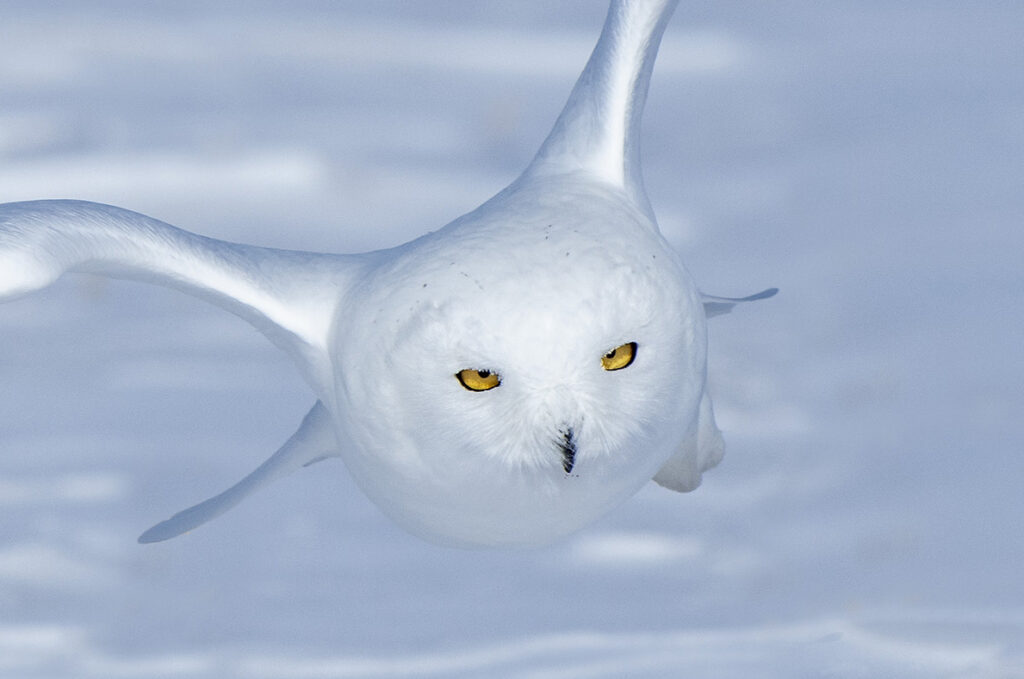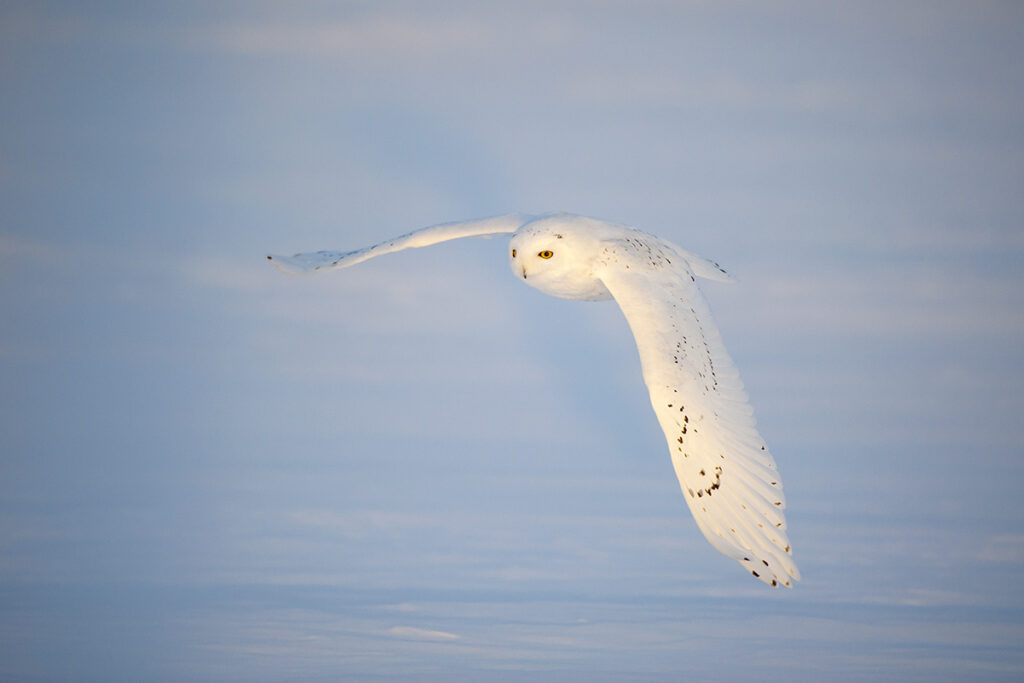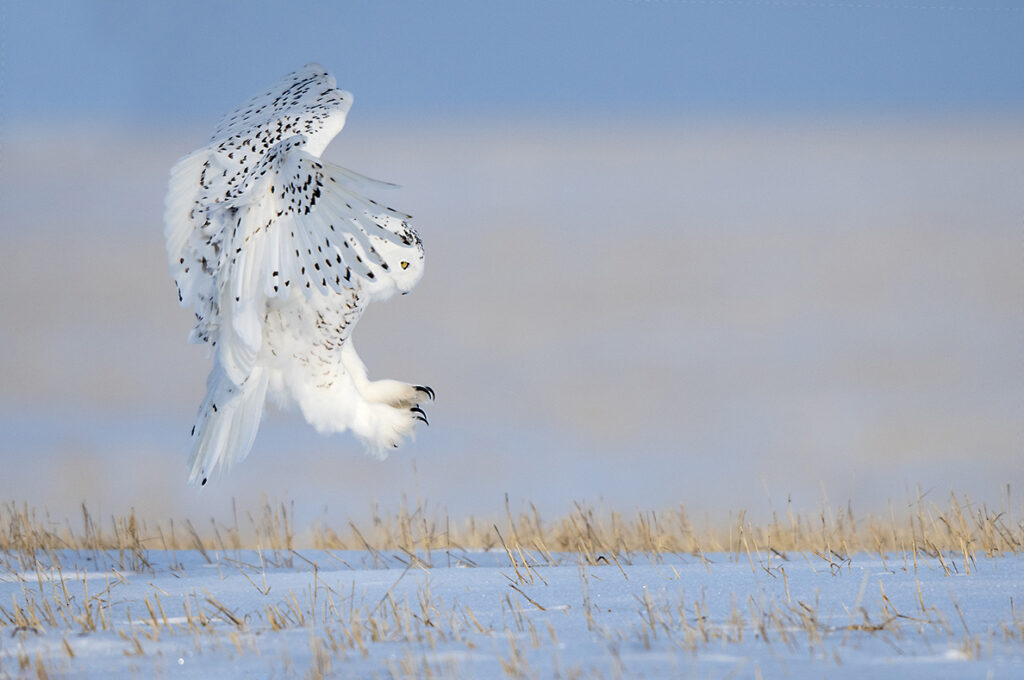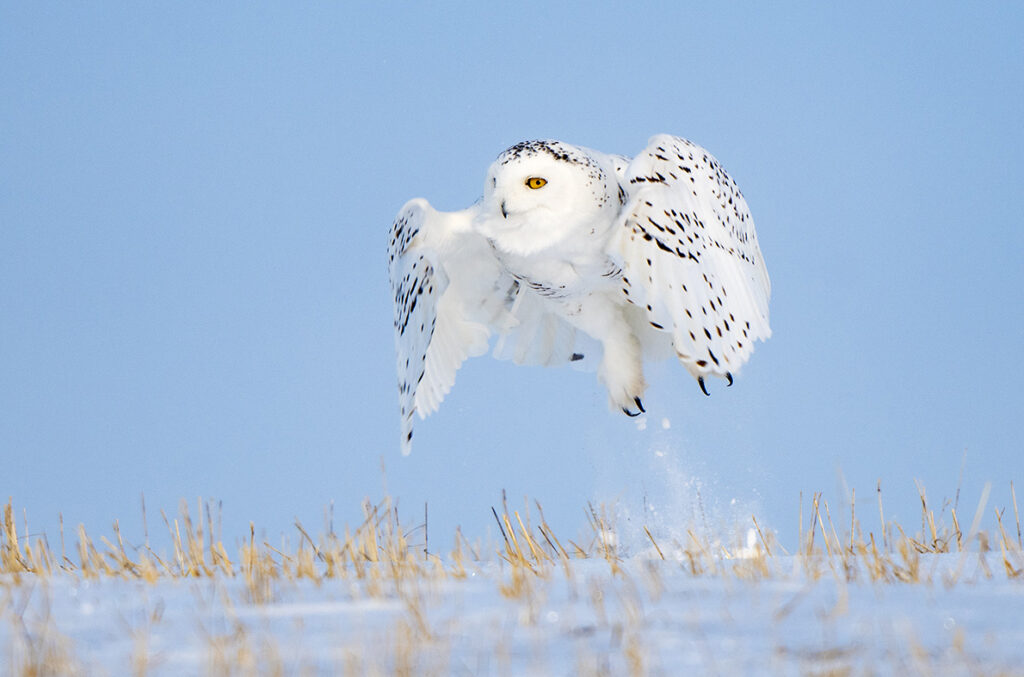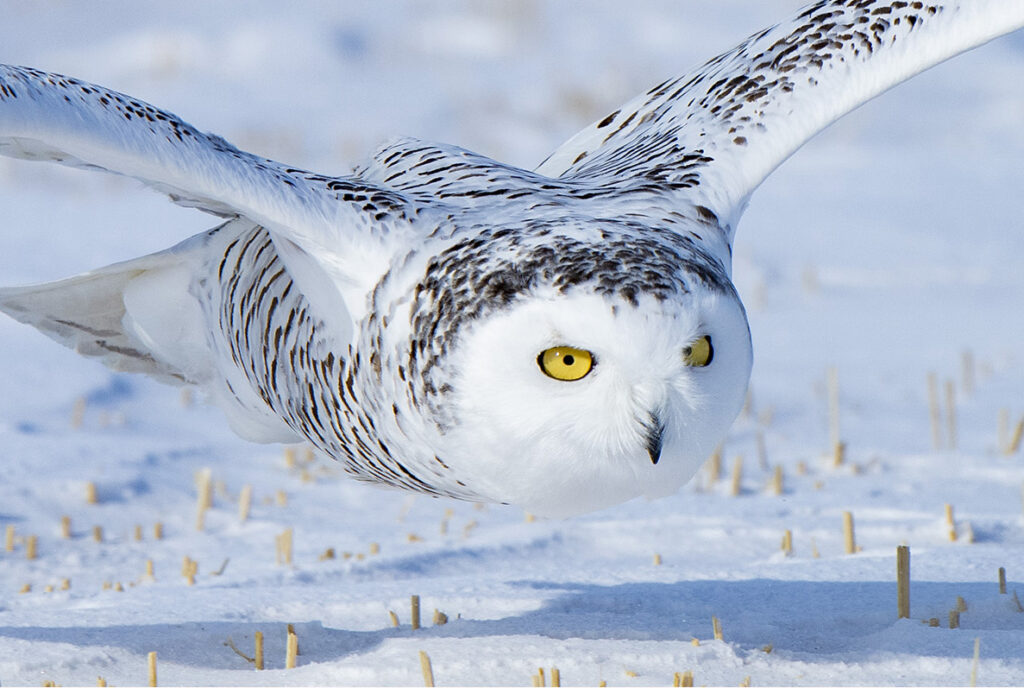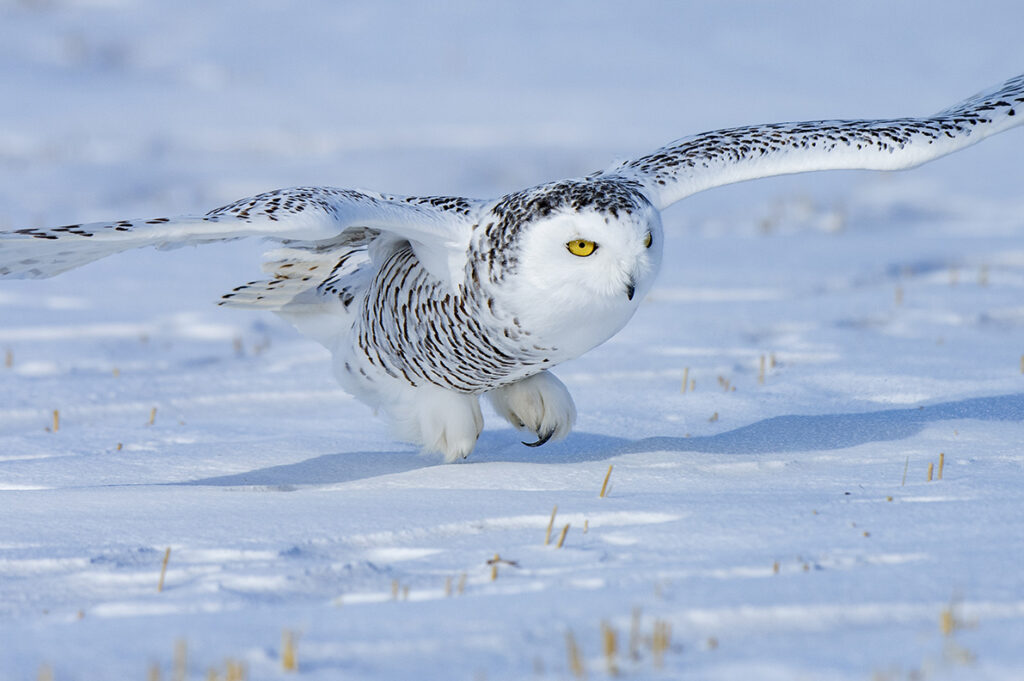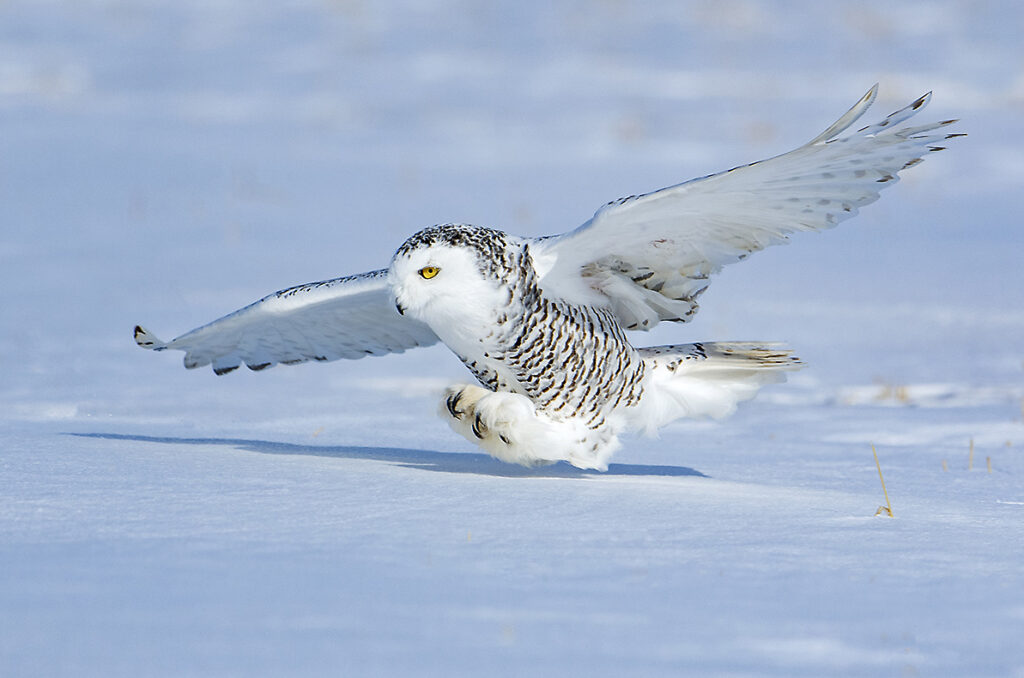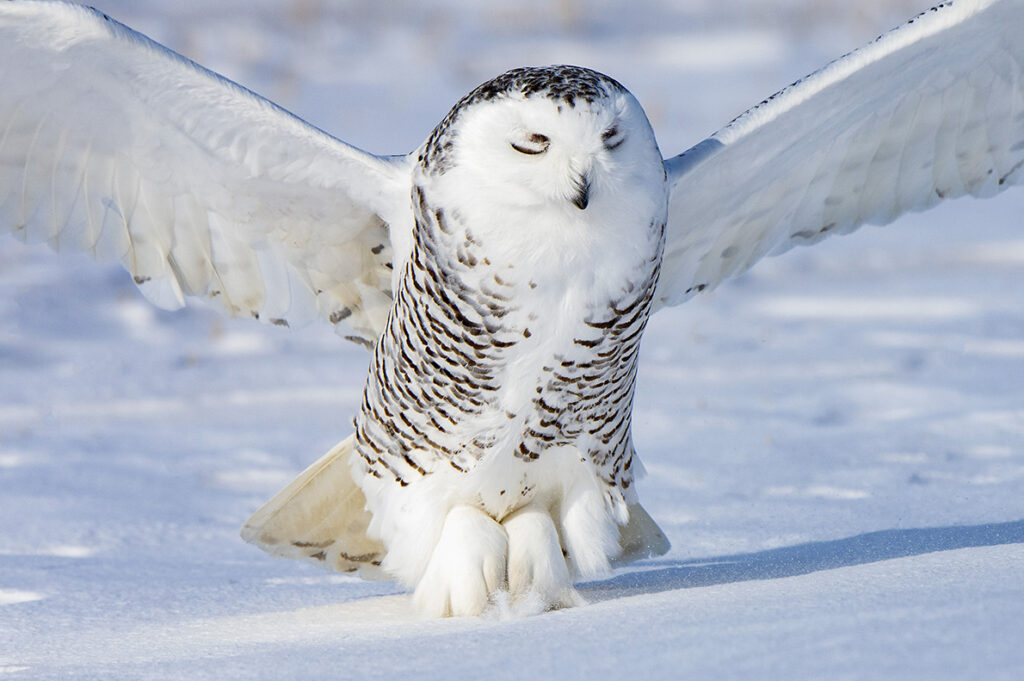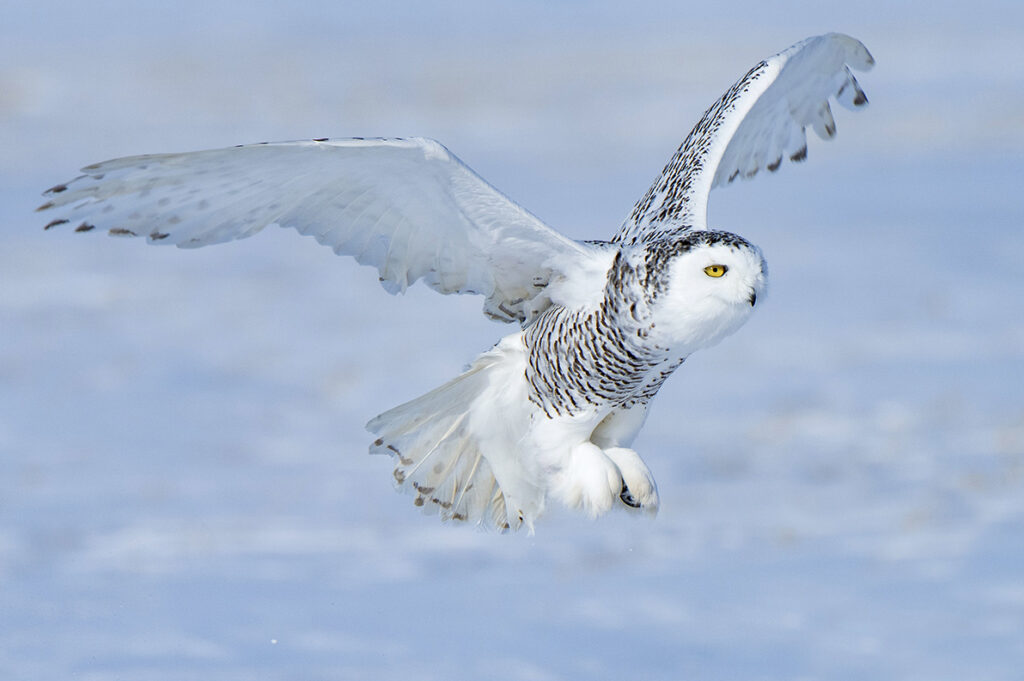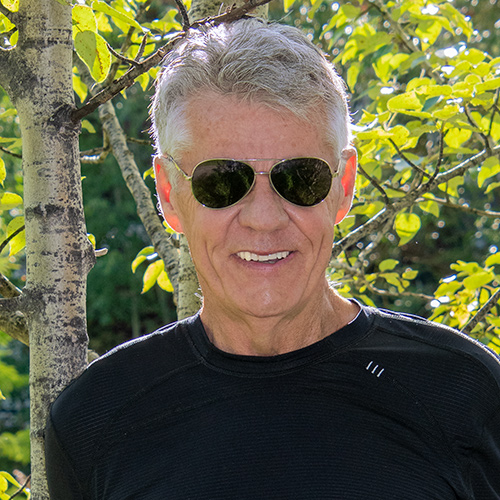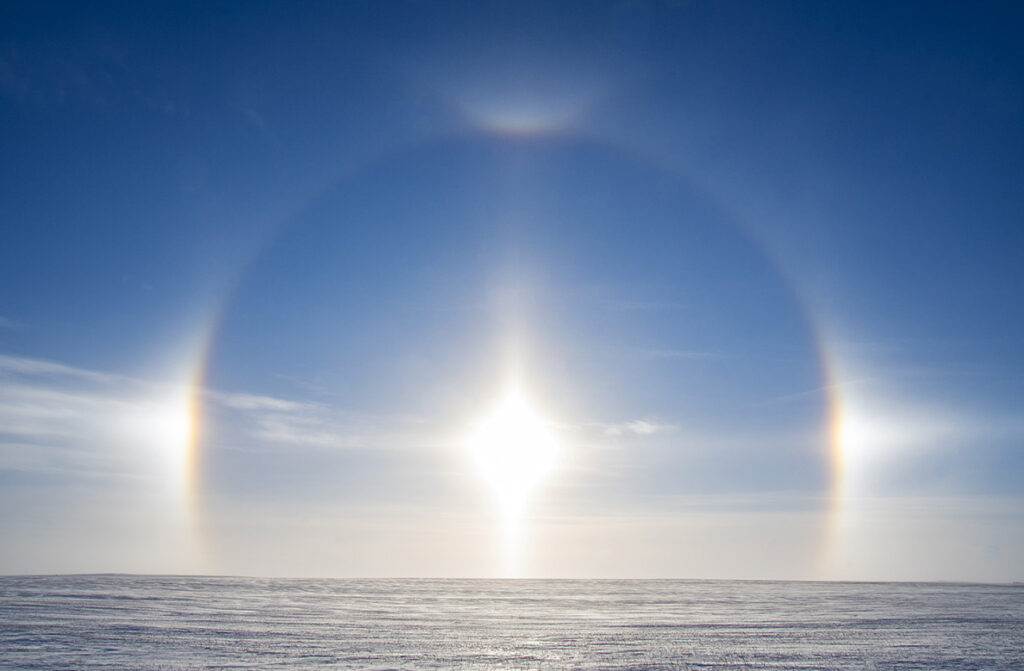
A “sundog” on the prairies. Temperature -23°C, windchill -41°C
Penguins and owls are the two most recognizable and popular groups of birds. Although wild penguins are hard to find in Canada it is a different story for owls. Of the 14 species of owls found in Canada, 10 of them tough out the winters where I live in Alberta, and my favourite among them is the splendid snowy owl.
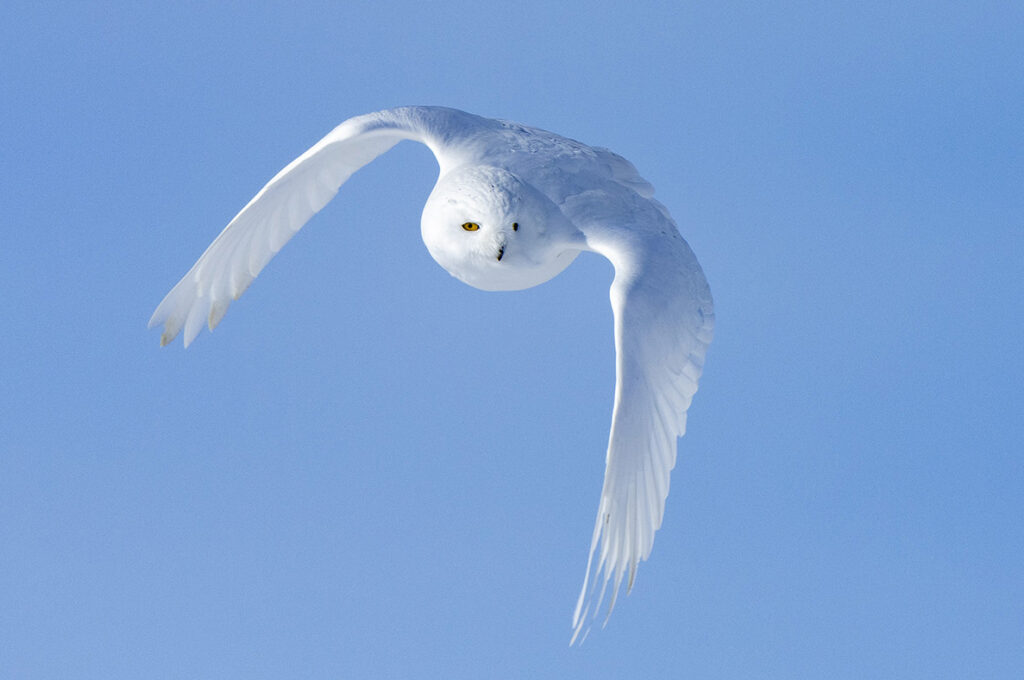
Adult male snowy owls weigh 25-30% less than females.
Snowy owls spend the summer months in the Arctic breeding in remote tundra areas. Afterwards, many of them, especially juveniles, migrate south to the croplands of the northern Great Plains in search of a treeless habitat where there is an abundance of small mammals such as deer mice and meadow voles.
Male snowies have very few dark feathers.
The first owls arrive in southern Alberta in early November. Most female owls defend a small winter territory of 1 to 4 square kilometres, occupying it for an average of 44 days, but sometimes for as long as 80 days. Male snowy owls normally do not defend a winter territory and are nomadic, spending just a few days in an area before moving on, although some may loiter for as long as several weeks.
A female snowy owl lands on a ridge, and after scanning the stubble field for 20 minutes takes off again.
The cryptic owls spend most of their daylight hours perched and loafing on the ground, and typically only hunt during the first hour after sunrise and for one to two hours before sunset. They are sit-and-wait predators that hunt from a lofty perch such as a utility pole or treetop. From here they scan their surroundings for vulnerable prey, then strike in a silent, low level attack. Researchers estimate that a wintering snowy owl in Alberta needs to catch roughly 9 to 11 deer mice or 7 or 8 meadow voles every day, most of which they believe are caught at night.
The charismatic owls begin to leave in late February, and most have left by the end of March. “Hasta la vista, baby”.
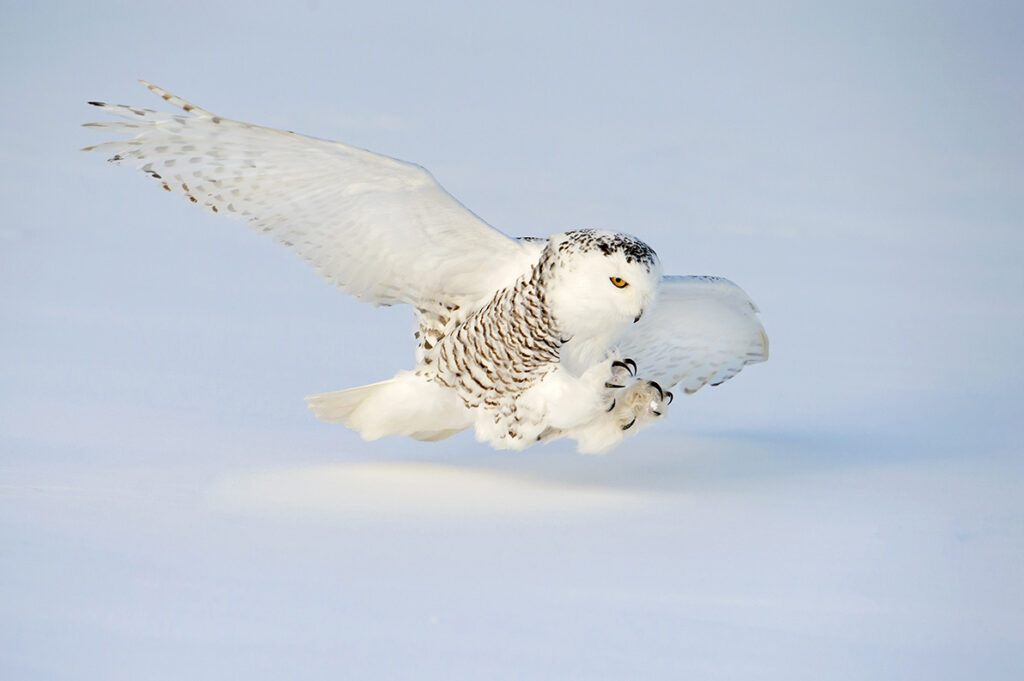
A female launches an attack on a vole in a roadside ditch.
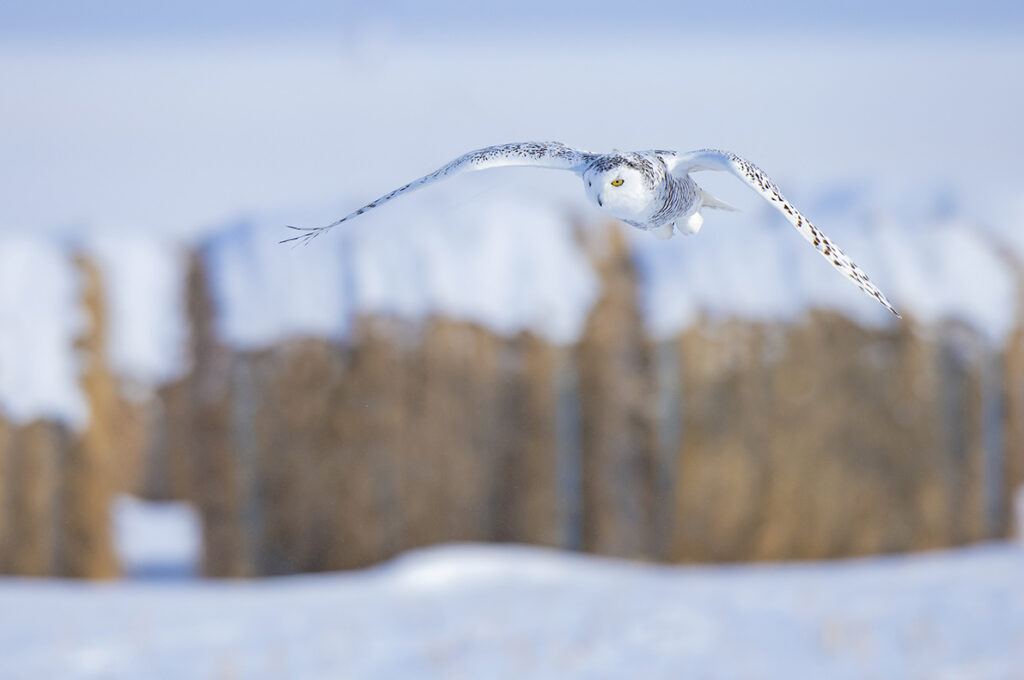
Large hay bales are often used as hunting perches in the flat, treeless environment of the prairies.
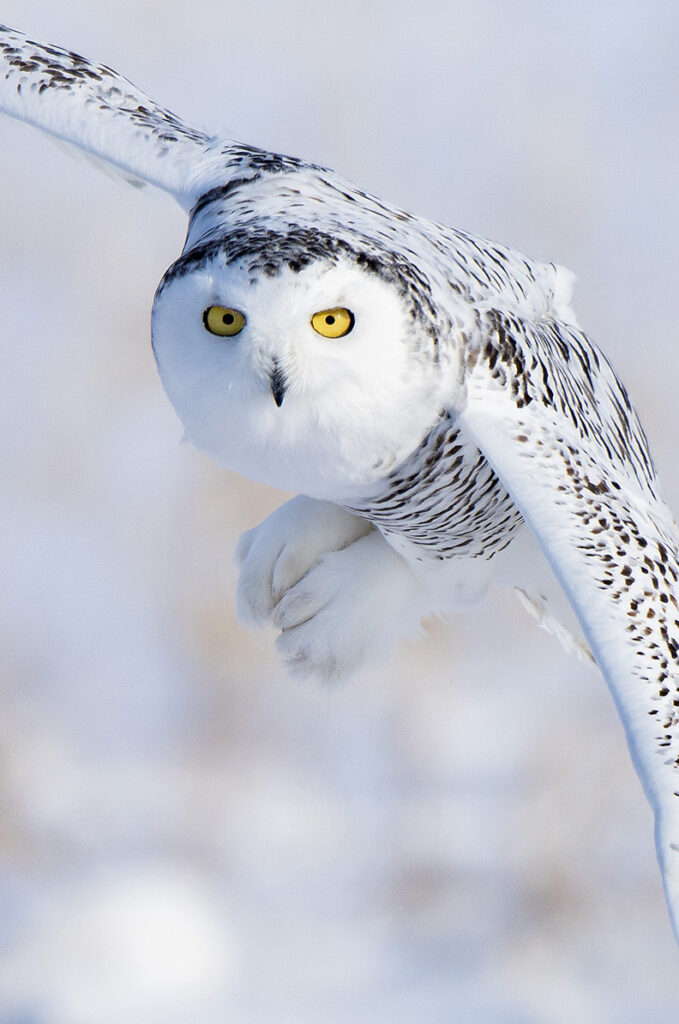
Adult female snowy owls are distinguished from males by their many dark feathers.
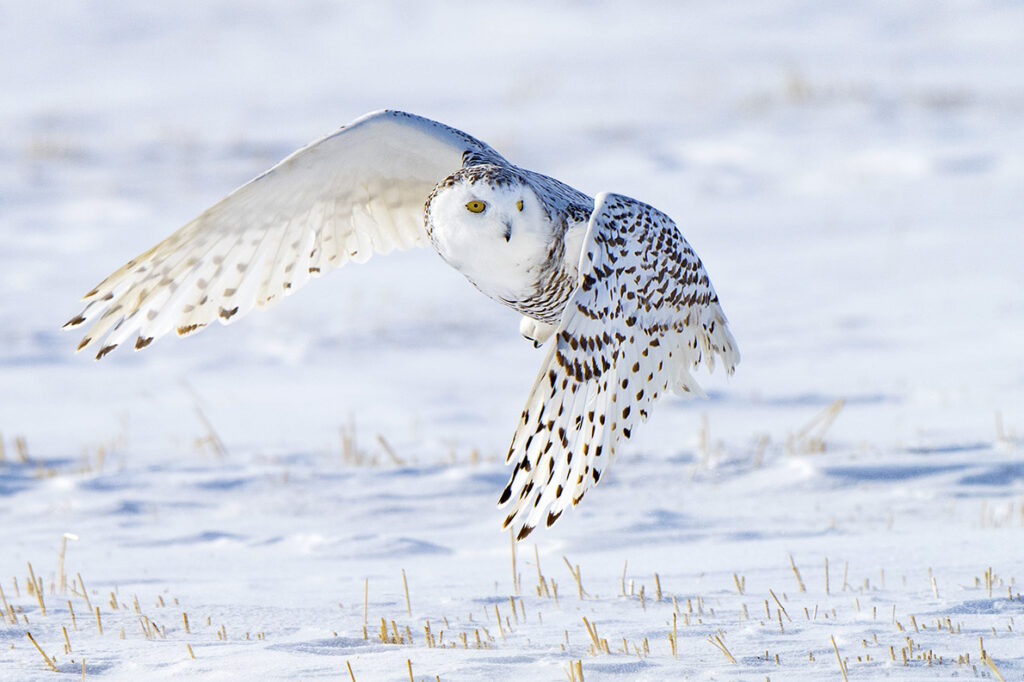
Adult females weigh 2.1-2.6 kg (4 ½ -5 ½ lb) and are the heaviest owls in North America.
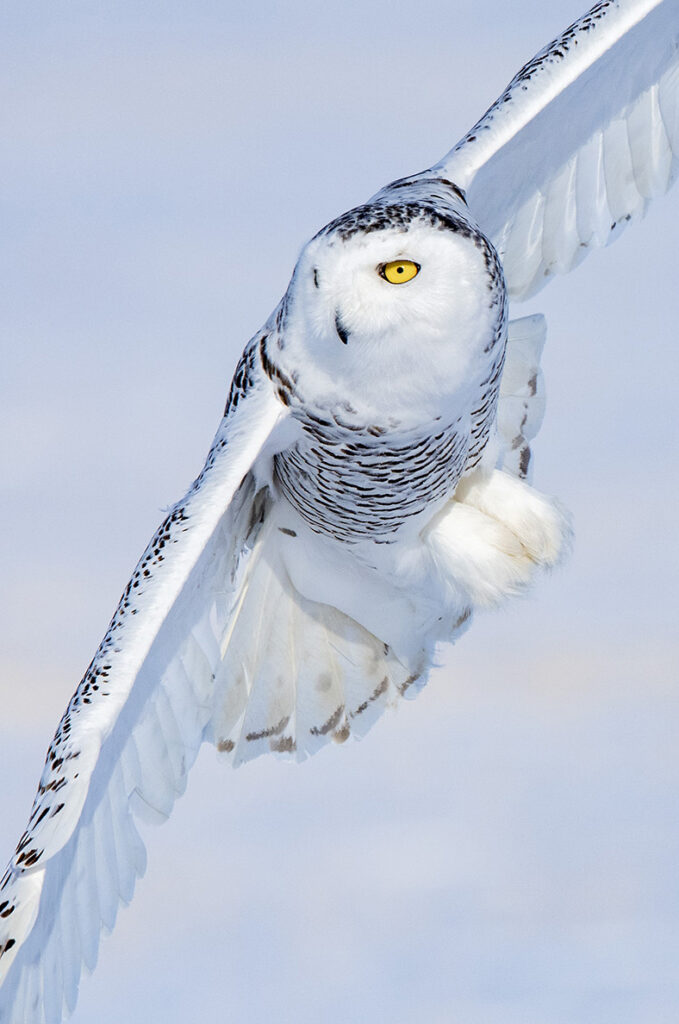
Small mammals, such as voles, mice and pocket gophers, are carried to a perch for consumption.
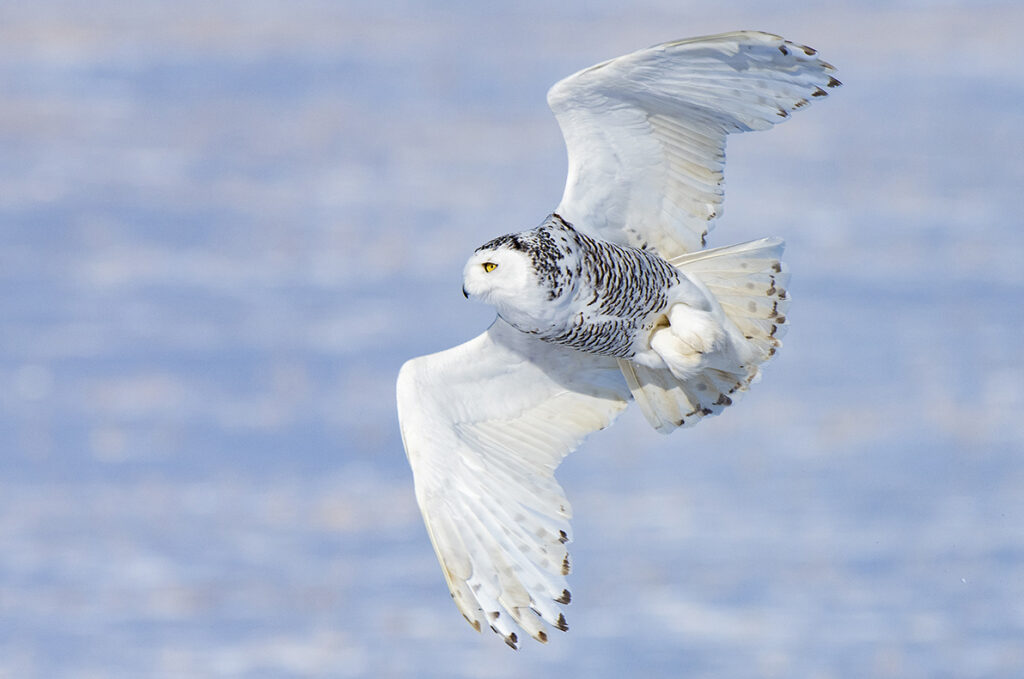
Small prey is killed instantly with a bite to the head.
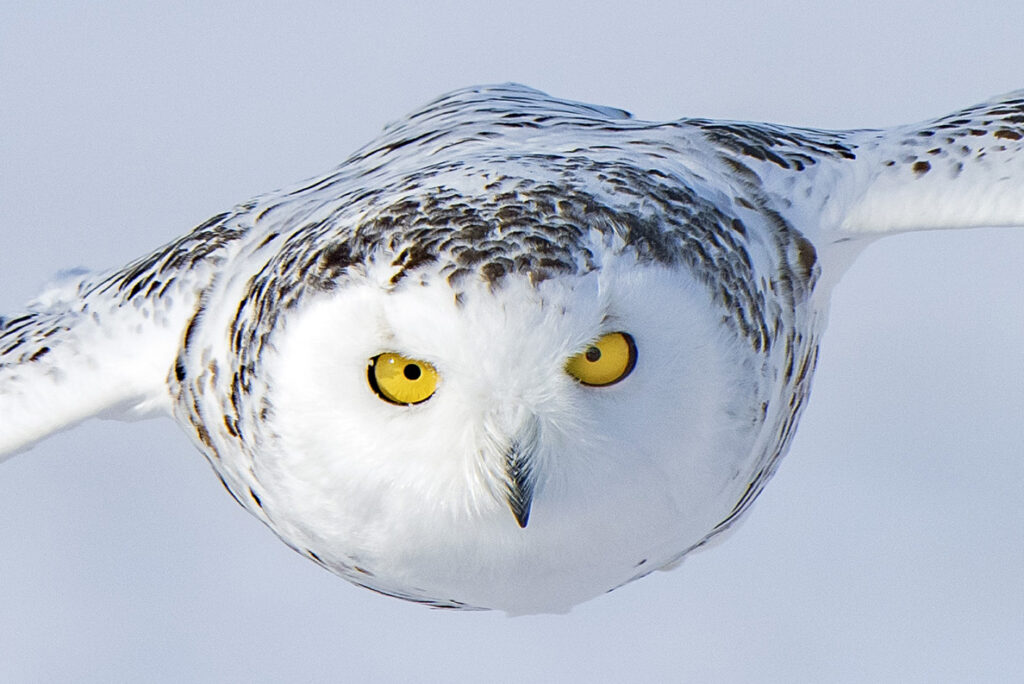
A snowy owl’s visual acuity is roughly 2 to 3 times better than a human’s.
About the Author – Dr. Wayne Lynch
For more than 40 years, Dr. Wayne Lynch has been writing about and photographing the wildlands of the world from the stark beauty of the Arctic and Antarctic to the lush rainforests of the tropics. Today, he is one of Canada’s best-known and most widely published nature writers and wildlife photographers. His photo credits include hundreds of magazine covers, thousands of calendar shots, and tens of thousands of images published in over 80 countries. He is also the author/photographer of more than 45 books for children as well as over 20 highly acclaimed natural history books for adults including Windswept: A Passionate View of the Prairie Grasslands; Penguins of the World; Bears: Monarchs of the Northern Wilderness; A is for Arctic: Natural Wonders of a Polar World; Wild Birds Across the Prairies; Planet Arctic: Life at the Top of the World; The Great Northern Kingdom: Life in the Boreal Forest; Owls of the United States and Canada: A Complete Guide to their Biology and Behavior; Penguins: The World’s Coolest Birds; Galapagos: A Traveler’s Introduction; A Celebration of Prairie Birds; and Bears of the North: A Year Inside Their Worlds. In 2022, he released Wildlife of the Rockies for Kids, and Loons: Treasured Symbols of the North. His books have won multiple awards and have been described as “a magical combination of words and images.”
Dr. Lynch has observed and photographed wildlife in over 70 countries and is a Fellow of the internationally recognized Explorers Club, headquartered in New York City. A Fellow is someone who has actively participated in exploration or has substantially enlarged the scope of human knowledge through scientific achievements and published reports, books, and articles. In 1997, Dr. Lynch was elected as a Fellow to the Arctic Institute of North America in recognition of his contributions to the knowledge of polar and subpolar regions. And since 1996 his biography has been included in Canada’s Who’s Who.




